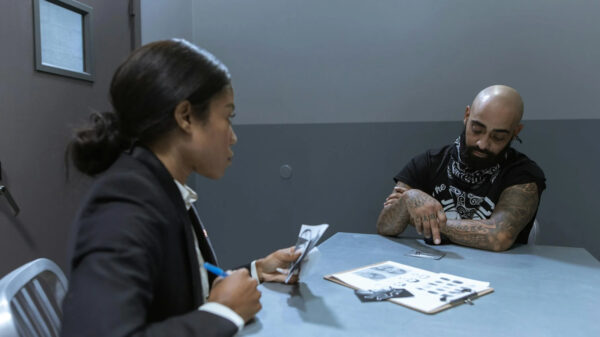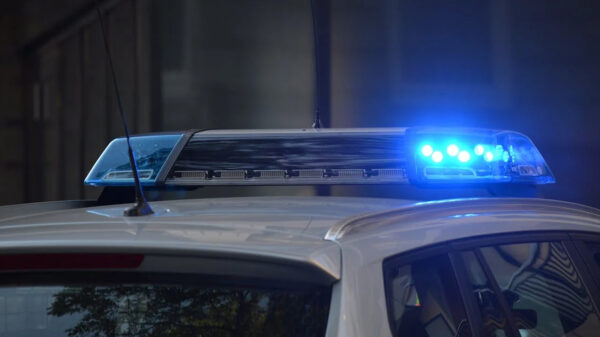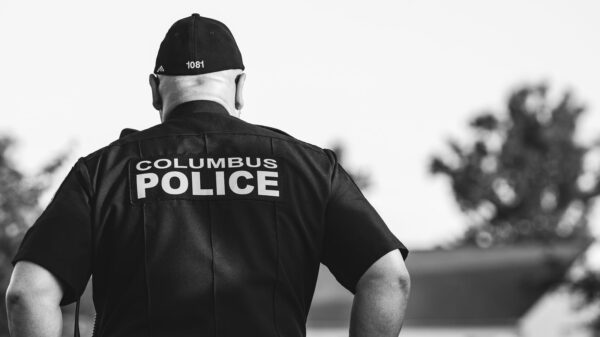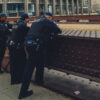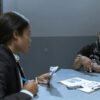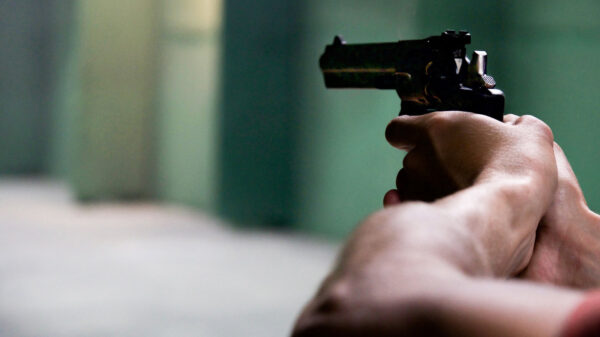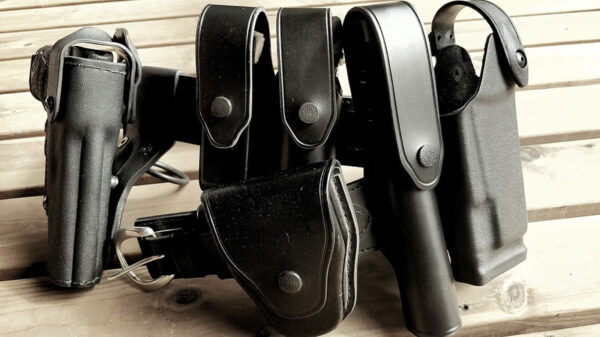If you’re like me, you probably get asked about race relations in America, the deaths of African-Americans at the hands of police, and the increasing violence against officers. As a member of the law-enforcement family (and a member of the Christian community), I try to respond by providing some insight into the training and daily practices of police officers, particularly given the number of requests I’ve received online. Although most people are familiar with police work from television dramas and news reports, few actually understand the nature of the environment in which we work. As police officers, we need to help the public understand what we are asked to do on a daily basis so they can properly assess the current situation and respond in a more reasonable way. Here are six important things I try to encourage everyone to keep in mind (and prayer) when assessing the actions of police officers in our country:
1. No one is more upset about “bad” police shootings than good police officers. At the end of my law enforcement career, my Chief asked me to design an ethics program for our agency. I was eager to get involved. I know there are times when officers may act inappropriately. We’re all fallen human beings, and the standard for police officers is higher than just about any other profession in the country. We have to be perfect in times of crisis with little or no time to consider the options. Some are better at this than others, and a few are bound to do or say something they shouldn’t. No one is more offended when this happens than the hundreds of thousands of police officers who work hard to uphold the honor of the badge. No one hates a bad cop more than a good cop.
Today there are over 900,000 sworn officers nationwide. These law enforcement officers aren’t nearly as popular as other first-responders, like fire or paramedic personnel. Over the past ten years, for example, police were assaulted an average of 50,355 times each year, resulting in 14,355 injuries. In 2021, 162 officers were killed in the line of duty. Police officers obviously don’t work in a risk-free environment, but the risk is not an excuse for bad behavior. We will not excuse the inappropriate actions of a tiny minority when they occur. Instead, we want offenders banished from our ranks when it is justified. We will not tolerate the badge being tarnished. So, as you assess each allegation leveled against a police officer, remember this: if, in the end, it’s determined that the officer did something criminal, no one will be quicker to call for his or her prosecution than the law enforcement community. No one hates a bad cop more than a good cop. Share on X
2. Police officers are more than reactive; they are proactive. This is incredibly important to remember. Unlike other first-responders, officers are expected to do more than simply respond. The largest division in every police agency is the Patrol Division. Fire personnel don’t patrol the street looking for the next fire, but police officers are asked to keep our communities safe by taking a proactive approach. We handle our calls for service, then we actively patrol the streets in an effort to prevent the next crime.
This proactive nature of police work is sometimes controversial and is the source of incredible risk on the part of every officer. Think about it for a minute: it would be a lot easier (and safer) for officers to stay in the station and simply respond to take reports after the fact. But that’s not what we do. Instead, we are on the street, ever-vigilant, hoping to be near enough to the robbery or assault to actually catch the bad-guy. Better yet, we want to stop crimes before they ever occur. When I first started as a police officer, all of us recognized this preventative effort as our duty. One of my partners would start each shift by saying, “Are you ready to get out there and crush crime?”
As a society, we Americans need to decide if this is still acceptable. Do we want our officers to proactively look for trouble before it occurs? Can this be effectively achieved without offending the sensibility of people who think they are being targeted unjustly? Many officers are beginning to wonder. Some have considered abandoning the proactive responsibilities of their work altogether. Can you really blame them? Why take on the risk when they could easily draw a paycheck for doing much less? Don’t worry, it won’t happen; police officers have always been loyal to the Call. But, as you assess each reported incident, remember what our communities require and expect of us and the risk this entails.
3. Police officers interact with a limited people group. When I was working undercover in the inner city, I noticed how residents there (even the committed gangsters) afforded fire, paramedic and rescue personnel a great deal of respect. They didn’t always respond this way to the uniformed police officers who patrolled their neighborhoods, however. Why the difference? I think it’s largely due to the kinds of interactions police officers are required to have with the community. Some first-responders save lives and put out fires; some take people to jail. The latter group is decidedly less popular.
Unlike other first-responders, police officers don’t engage people across the entire spectrum of our society. Anyone can have a heart attack or need a firefighter, but not everyone is a suspect who needs to go to jail. Paramedics aren’t required to capture the source of their victim’s heart attack, but police officers are expected to catch their victims’ offenders. Much of our interaction with people is, therefore, resisted. Victims are often impatient and wary, and suspects are evasive or aggressive. No one calls us to report how great their day has been or to invite us to a party. If we’ve been called to the scene, there’s a good chance the scene is already ugly. The nature of our work is aligned against us before we ever step out of our police cars. Next time you’re reading a report about a police incident, take a minute to rewind the event in your mind. Try to imagine what these officers had to face when they arrived and the nature of the people they had to encounter.
4. Police officers don’t work aimlessly. I bet what I’m about to tell you may come as a surprise to some of you, especially if you feel like you’ve ever been “randomly” targeted for what you consider to be an unfair traffic citation. Police officers don’t drive around hoping to irritate people. We’re focused. Every shift begins with a patrol briefing where officers review crime trends in their city. Traffic officers study where accidents have been occurring as the result of speeding motorists; patrol officers study the most recent unsolved crimes in our jurisdiction. We then attempt to solve the specific problems we’ve discovered. Imagine, for example, there’s a street robbery series in the north end, the suspect is a red headed white male in a tan compact car and he’s been using a blue-steel handgun. Guess what officers are looking for today? A red-head in a tan compact car.
Now if you happen to be a law-abiding red-head who drives a tan compact car, you may be momentarily inconvenienced today if you drive through our town. We’ll do our best to explain to you why we stopped you, but you may not be satisfied with our answer. In fact, you might wonder why we treated you with a higher degree of caution than you thought appropriate. You might come away thinking, “Man the cops in this city are prejudiced against red-heads! They treated me like a criminal!” I completely understand where you’re coming from, but believe me, it has nothing to do with a bias against red-heads. It has everything to do with the reports we’ve been reading in briefing. We’re not here to recklessly harass people, we’re here to stop the next armed robbery before someone gets hurt. Now, I hope the officer took the time to explain this to you when he became certain you weren’t our robbery suspect, but you may have been too angry to hear what he had to say.
5. Police officers do all they can to limit their use of force. One news source reported it this way: “Black people were killed by police at more than twice the rate of white people this year.” Statements like this are disturbing to say the least, and I can see why they are rhetorically powerful. But the law enforcement related death statistics simply cannot be evaluated to the exclusion of the crime statistics we’ve already described. Officers don’t get a choice about the kinds of crimes they have to handle or the race of the suspects who committed them.
But this doesn’t give officers license to use excessive force on any particular group. Officers consider a “force continuum” (some agencies have altered the approach slightly and select between “force options”) when trying to decide how to control a situation. At the bottom of this continuum are options like the use of one’s voice to command a situation or simply one’s “command presence” demonstrated by the way he or she stands and commands the scene. If that doesn’t work, officers have the option of doing something higher on the continuum; they may have to use their hands, a baton, or a Taser. In the worst case scenario, they may have to resort to deadly force to control a situation. How do they decide which level to use? It’s all based on the level of force they are facing in the first place.
Officers are not required to suffer an injury before responding with an appropriate level of force. If they wait to be shot before using their own handgun, they may not be in a position to use their gun at all. Perhaps the most important goal of every police officer is to get home alive at the end of the shift. Therefore, officers try to respond proactively, by anticipating the level of force they are about to meet and trying to exceed it at an appropriate level. Officers often have to make these decisions in a fraction of a second. If a suspect is extremely combative, but unarmed, officers try to decide if they can handle the situation by grappling with the suspect. If officers fear for their safety, however, they may rightly decide to choose something higher on the force continuum, perhaps a baton or a Taser. If a suspect is armed with a knife, officers are likely to use an even higher level of force to control the situation. They may now pull their handgun to take command of the scene. They won’t wait to be fatally stabbed in this situation. If necessary, they will reluctantly deploy their weapon to stop the threat.
One last comment here: when officers are unsure about the level of force they are about to encounter, they may appropriately prepare for the worst. If an officer is about to turn a corner on a suspect he thinks may be armed, it’s appropriate for the officer to draw his handgun, even though he may not yet find himself staring down the barrel of a gun. Officers don’t preemptively pull their guns because they’re heavy handed or racist, they do this because they want to go home at the end of the shift. The use of force is the most important decision a police officer can make, and every use of force is intended to be defensive, not offensive. Officers are either defending themselves or defending their community. They don’t make these decisions lightly, and believe it or not, they don’t make them based on race. They make these decisions on the basis of perceived threat. In fact, there’s good reason to believe officers are only now considering race when using deadly force. Rather than being more inclined to shoot an African American suspect, for example, they may actually be less inclined to do so. A recent study found that “while (officers) don’t want to shoot anybody, they really don’t want to shoot black suspects.” Next time you hear about a police officer who had to use deadly force, remember that the officer likely did his or her best to assess the level of threat they were facing before deciding to respond in a particular way. Their split second decision, as good or bad as it may have been, will be judged for years to come.
6. Police officers are typically well received, in spite of all the negative publicity. As a member of the Law Enforcement family, it’s tempting for me to be distraught about all the negative publicity that questionable shootings bring to police officers. It’s times like this when I have to remember that most citizens, regardless of race, economic status or geographic location, greatly appreciate the men and women in blue. In 2011, approximately 31.4 million U.S. citizens (13% of the population), requested assistance from the police at least once. In addition to these calls for service, police officers likely engaged the public proactively many more times. It’s nearly impossible to gather statistics for these proactive contacts, but if officers made one self-initiated contact for every ten calls for service (a fair estimate in my opinion), that would add an additional 3.1 million contacts with the public. I’ll bet the numbers were much higher last year (2015), but let’s use these 2011 statistics to make a point. 986 deaths occurred at the hands of police officers in 2015. In a year when police contacted the public at least 34.5 million times (using the lower 2011 numbers), 986 of these contacts resulted in the death of a citizen. Even if every one of these deaths were suspicious or unnecessary (something we know to be untrue, since 75% of these cases involved officers who “were under attack or defending someone who was”), this would mean less than .003% of police contacts resulted in suspect’s death. Don’t get me wrong, even one death is a tragedy, but most of us understand the importance of assessing the performance of our law enforcement personnel in the larger context of their everyday duties.
Approximately 93% of persons who requested police assistance in 2011 thought the officers acted properly, 86% felt the police were helpful, and 85% were satisfied with the police response. About 93% of persons who requested police assistance reported that they were just as likely or more likely to contact the police again for a similar problem. Even though we must be ever-vigilant to make sure our officers are doing the right thing, it’s important to resist the temptation to allow .003% of the interaction to taint the way think about the other 99.997%. Considering the millions of calls for service each year, the shootings you’re reading about represent a tiny fraction of the job police officers do every day.
We’re in a difficult era in America as we try to understand how we got here and what we can do to make it better. While politicians, sociologists and philosophers theorize about how to solve the problem, we will continue to guard the public safety. While some collectively look for broader answers, we must continue to do our job. And now, more than ever, we need to help others understand what that job entails.
Save
Save
Save
Save
Save
Save
Save
J. Warner Wallace is a Dateline featured cold-case homicide detective, popular national speaker and best-selling author. He continues to consult on cold-case investigations while serving as a Senior Fellow at the Colson Center for Christian Worldview. He is also an Adj. Professor of Christian Apologetics at Talbot School of Theology, Biola University, and a faculty member at Summit Ministries. J. Warner presently serves as a chaplain for his agency and holds a BA in Design (from CSULB), an MA in Architecture (from UCLA), and an MA in Theological Studies (from Gateway Seminary).











